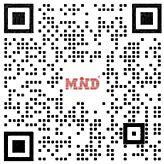Researchers from Disney, the Universities of Washington and Carnegie Mellon University have used inexpensive, battery-free radio frequency
identification (RFID) tags and conductive inks to create an implementation on simple paper. interactivity.
Currently, commercial RFID tag stickers are powered by incident RF energy, so no batteries are required, and their unit cost is only 10 cents.
Attaching this low-cost RFID to paper allows users to paint with conductive ink and create their own labels as they wish. Additionally, the antennas
can be printed using silver nanoparticle inks, allowing the adaptive paper to interact with local computing resources.
Depending on the type of interaction the user wants to achieve, researchers have developed different ways of interacting with RFID tags. For example,
simple sticker labels work well for on/off button commands, while multiple labels drawn side-by-side in an array or circle on paper can act as sliders and knobs.
The technology, called Paper ID, enables a variety of different applications, from pop-upbooks, to wirelessly triggering sound effects, to capturing the content
of printed paper, and more. The researchers even demonstrated how to control the tempo of the music with a paper baton.
Its working principle is to detect the change of the underlying parameters during RFID channel communication. Low-level parameters include: signal strength,
signal phase, number of channels, and Doppler shift. The use of multiple adjacent RFID tags is mainly used to create the basic elements of various interactions
and gesture recognition, which can be used as building blocks for higher-level interactions.
The research team has also developed machine learning software that can be used to recognize more complex gestures and higher-order interactions, including
overlays, touches, swipes, rotations, flicks, and wa.
This PaperID technology can also be applied to other media and surfaces for gesture-based sensing. The researchers chose to partially demonstrate on paper
because it is ubiquitous, flexible, and recyclable, suitable for the intended purpose of creating a simple, cost-effective interface that can be quickly adapted to
the needs of small tasks.

Post time: Mar-01-2022





